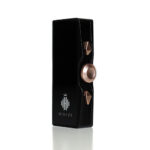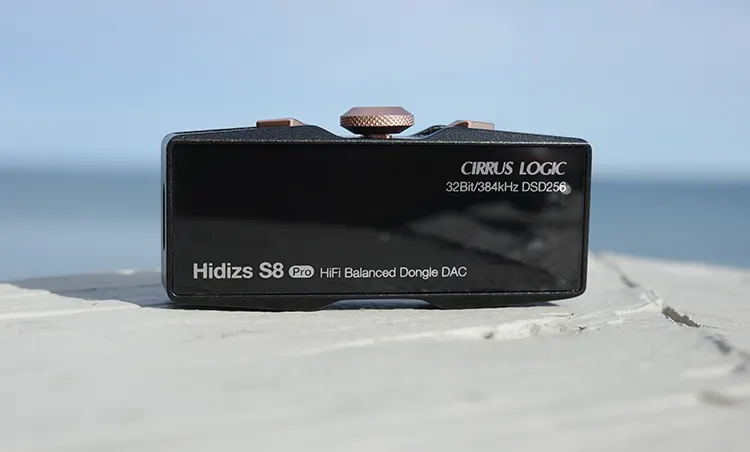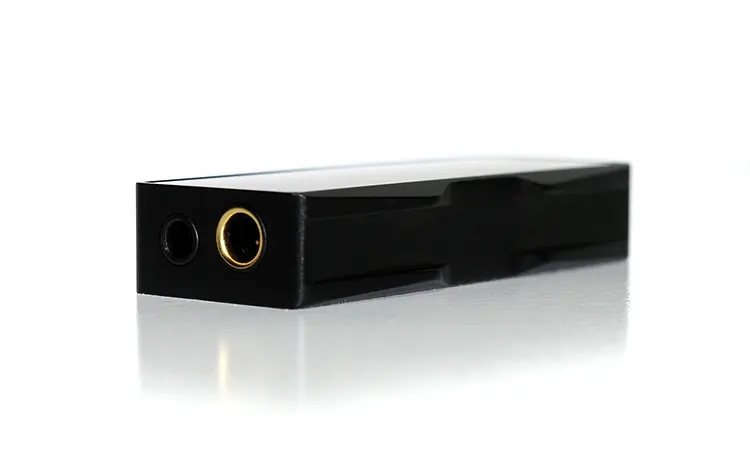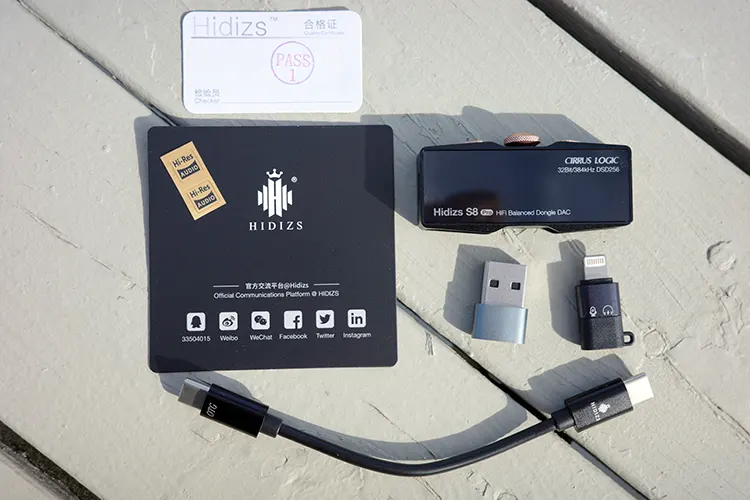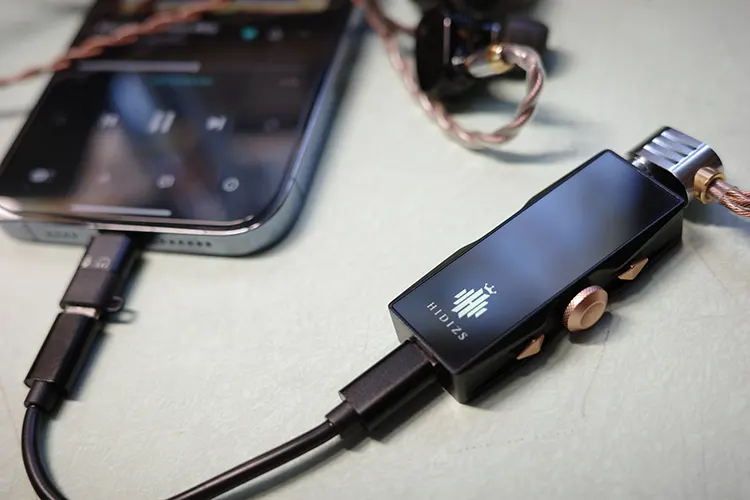Today, Lynn reviews the Hidizs S8 Pro Robin, which is a dual CS43131 dongle DAC capable of up to DSD256 and 160mW of balanced output power. It is priced at $99 SRP but is currently discounted to $79.
Disclaimer: This sample was sent to me in exchange for our honest opinion. Headfonics is an independent website with no affiliate links or status. I thank Hidizs for their support.
To read more about Hidizs products we have previously assessed on Headfonics click here.
Please note, that this article follows our current scoring guidelines which you can read in more detail here.
Going back to my S9 Pro Plus Martha dongle DAC review, I commented that for many consumers, the price to performance point was as important as the audio qualities for such an item. This still holds as many continue to upgrade dongle/DACs in their stable
Hidizs could be considered a leading competitor in this niche, so the new $99 S8 Pro Robin portable dongle DAC may just continue that tradition.
Hidizs code-named the unit Robin for good luck, and a “spreading of your wings,” with another nod to our place on the planet alongside the species we share on Earth.
Features
The Hidizs S8 Pro Robin boasts a dual 32-bit DAC balanced architecture, powered by two CS43131 chips with decoding up to 32bit/384kHz for PCM and DSD256 natively and the same six filter choices used in the Martha.
With 80mW+80mW@32Ω 3.5mm SE / 160mW+160mW@32Ω 4.4mm BAL, it will properly drive any IEMs including hard-to-drive planar or low impedance IEMs, earbuds, and many headphones. Both 3.5mm single-ended and 4.4mm balanced jack options are included.
If you wish to use the S8 Pro Robin as a wired DAC or in OTG mode it supports operating systems including Windows, Mac OS, iPad OS, Android, iOS, and Harmony OS.
Design
The small design of many Dongle/DACs makes for an easily pocketable offering, and the S8 Pro Robin is no different.
Weighing in at a scant 17g, the S8 Pro Robin is barely felt, while the included cable (my sample came complete with an iOS adapter, which is included in the package thankfully) is long enough to double back on your device. The cable is short enough to not cause a bother, either.
With a size slightly smaller than a 7-piece package of Juicy Fruit (look it up) at 58mm x 28mm x 12mm, those 17g of weight also translate into a small overall size; even if it is slightly larger than Martha.
Designed with “wings” representative of a bird flying, those wings also protect the three buttons on the business side of things. There is just enough sticking higher so you do not accidentally hit any of the buttons, but still have them within easy access.
While the black color looks good, it does carry fingerprints readily in its glossy color. If this bothers you, there is a silver color as well, which would hide said prints.
I/O
A USB-C connection resides on the bottom of the S8 Pro Plus Robin, with the dual 3.5mm SE and 4.4mm BAL jacks on the other end.
The two actuation buttons shaped like arrows denoting FF & REW, lie on the side and are used to raise or lower the volume. Pressing both simultaneously will change the filters (again by color, listed above).
The knob in the middle does not rotate and is only used for play/pause, just like on the Martha.
The S8 Pro Robin has a USB-C to USB-C connection, for use with Android options, and an iPhone adapter is included.
Connection and recognition were straightforward on both my iPhone and MBP. I was less able to denote filter changes on my iPhone similarly to the Martha, but changes were heard more on my MBP.
Filter Choices
The S8 Pro Plus Robin has six digital filters just like the Martha, that can be toggled through by simultaneously pressing both side buttons, and the color changes to denote the appropriate filter.
Allowing the user to toggle through the choices makes the S8 Pro Plus Robin a bit more versatile for different headphones and IEMs.
The light will blink in the following colors representative of the chosen filter by pushing both side buttons simultaneously. The colors and effects remain the same as on Martha, but the terminology has changed somewhat.
- NOS (Default Filter, green light): Slightly forward vocals, extended high frequencies with reduced resonance.
- High pass filter (red light): Enhanced analytical capabilities, delivering a clean and crisp sound.
- Deem phasis filter (blue light): Enriched harmonics, full low frequencies, and natural reverb.
- Fast & slow filter (yellow light): Balanced and moderate sound.
- Low-latency & phase-compensated filter (purple light): Clean sound with a forward position.
- Wide-band flat filter(white light): Soft and smooth sound with enhanced detail.
Battery Life
The S8 Pro Robin does not have a built-in battery and therefore requires the use of your source to power. I noticed battery drain on my iPhone was noticeable, at roughly 7-10% an hour, a bit too high for my liking.
This was less bothersome on my Mackbook Pro, but still noticeable at 3-4% per hour, which was higher than the Martha.
The drain is not out of the existing realm, but worth a look, regardless. The 3.5mm SE used less battery than the 4.4mm BAL, as one might expect.
Packaging & Accessories
The Hidizs S8 Pro Robin comes in a small, square plastic package, with the typical black sleeve over the box.
That sleeve carries the necessary information on the back as well as a picture of the black version on the front. The lid of the box carries the Hidizs logo and name, with their motto, “Relish Music. Beauty In The Details!”
Lifting the lid, you are met with the S8 Pro Robin in the color you chose. Mine is gloss black and while it looks quite sharp, it is quite fingerprint-prone. Accessories include a short USB-C to USB-C cable, a USB-C to USB-A adapter, a Lightning adapter, and the manual.
I like the small packaging and the reusable box aspect for keeping it all together.
Sound Impressions
All listening was done on either my Macbook Pro or iPhone 13 Pro Max. I used the HiBy x FAudio Project ACE IEMs along with the Campfire Audio Solaris 2020 and Campfire Audio Custom Supermoon IEMs. The FiiO FT3 (32Ω) was also used, just like in the Martha review.
Summary
Going back to my Martha review, grading differences in small, affordable dongle DACs is still an exercise in patience, especially when switching between the filter options. The sound differences can be small on one device (my iPhone), but markedly more so on others (MacBook Pro).
This should be taken separately from the sound impressions, but still mentioned. I did hear differences in both sources, but the changes were still minimal on the iPhone according to my ears across all listening devices.
The underlying S8 Pro Robin signature was somewhat less vibrant while also lacking in micro-details but performed better using a 4.4mm balanced cable option.
I enjoyed the smoother character, especially when changing filter choices, and having that ability allows the user to tailor the sound to their needs, or headphones.
Timbre
Utilizing the “neutral” filter first again (green color when switching), the S8 Pro Robin sound provided a smooth signature, with decent authority to the low end, while staying controlled; but lacked a visceral punch.
With that smooth sound, the S8 Pro Robin could be considered to have more of a V-shaped signature tending towards a smooth character over detail retrieval.
The details tended to fall off as a result of that smooth character, but I never found it lacking in energy when paired with the right genres such as jazz.
That smoothness colored the sound with a warmer, slightly richer signature The filters can tailor this a bit of course. This can be countered a bit while using the 4.4mm balanced jack.
I did have an overall preferred filter (the same one as on the Martha), but each presents a nice change to the song or when using different headphones or IEMs.
Staging & Dynamics
The S8 Pro Robin does not lack note weight, with better depth than the Martha and decent resolution present in all filter choices, especially from the 4.4mm balanced jack.
But this does not provide as much detail and separation as the Martha, which means much of the music can become smoothed and of a less detailed nature. This translates into a lack of placement, instrumentation-wise.
For laidback genres, this is good. For listening that provides very good energy or detail, less so. Again, the filters can enhance this a bit, and I recommend floating between filter choices to find your niche.
Compared again to the superb and more expensive Questyle M12, it does lack a good amount of detail. This is not unexpected, though. The trumpet notes carry excellent weight and engagement though, which can make up for quite a bit of detail indifference. Piano notes carry this well, too.
With the ability to change filters to suit your musical genres or listening device, the S8 Pro Robin promotes a much smoother character, than the very good, detailed sound from the Martha.
Preferred Filter(s)
My preferred choice(s) were the purple and white filters this time (#5 & #6 from the earlier filter list) since I prefer a more liquid, mellow sound presentation.
Lengthening the notes allowed them to linger just a bit, thickening the sound, even though the non-filtered S8 Pro Robin sound carries that signature as well.
I enjoyed both equally well with jazz presentations. For more vocal work I preferred the “stock” green filter and with guitar work, the blue filter for its very good harmonic treatment and that slight bit of reverb.
Having the six choices not only helps with different headphones and IEMs but also allows the user to tailor the signature for multiple genres.
Click on page 2 below for my recommended pairings and selected comparisons.





